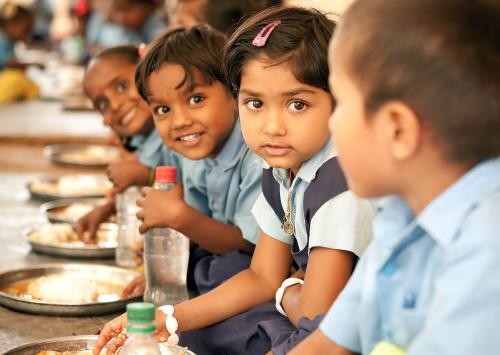I have previously written in this space an analysis of the promise and perils of the embrace of soft skills by education reformers. I objected to the conceptualization and measurement of soft skills in education settings in ways akin to how psychologists approach human personality, i.e., as relatively enduring, trait-like individual differences in broad patterns of behavior. I described research indicating that such patterns of behavior are highly heritable, i.e., genetically determined, and concluded that schools that intend to improve student outcomes by trying to change student personality traits are barking up the wrong tree.
Two recent research studies add strong support to those conclusions. Both focus on “grit”, the soft skill popularized by Angela Duckworth and a favorite target for intervention and measurement in education reforms that target soft skills.
Grit, as conceptualized and measured by Duckworth and colleagues, consists of two connected constructs: perseverance in the face of difficulty and a passionate, enduring commitment to particular goals. In a foundational and influential study,[i] Duckworth reported that West Point cadets who scored higher on a paper-and-pencil grit scale were more likely to complete the challenging Beast Barracks program in their first two weeks than those who scored lower. Those scoring higher on grit would have been more likely to self-report on the grit scale that, for example, they had overcome setbacks to conquer an important challenge (perseverance) and less likely to report that their interests change from year to year (enduring commitments). Informally, we can imagine the extremely gritty cadets as ones who had previously always finished what they started (perseverance) and who may have had a long-term goal of being an officer in the military (consistency of interest). And we can imagine that such cadets in the face of a series of physically and mentally challenging West Point training exercises might be more likely to stick to it than cadets with lower levels of self-reported perseverance and consistency of interests.
Accepting these results at face value, there are three important questions that arise with respect to education programs intended to enhance soft skills such as grit. The first is the extent to which grit is a malleable characteristic that schools can be reasonably expected to influence and for which they can be held accountable. The second is the extent to which grit influences the other outcomes for which schools are clearly held accountable, most particularly academic achievement. The third is the extent to which grit is unique vs. just another way of describing a human personality characteristic that has been recognized and studied for most of the history of scientific psychology.
A brief overview of the two recent studies is in order before addressing the questions. Both studies are published in the Journal of Personality and Social Psychology.
The first research report (hereafter the “twin study”), by Rimfeld et al.,[ii] is a study of 2,321 twin pairs in Great Britain. The subjects were administered as 16-year-olds Duckworth’s Grit-S scale, along with an assessment of the Big Five personality traits (openness to experience, conscientiousness, extraversion, agreeableness, and neuroticism). Grit and Big Five scores were used to predict the participants’ grades on the achievement exams that are administered UK-wide at the end of compulsory education. By comparing the correlations of Grit-S and Big Five scores between identical twins (who share the same family environment and 100 percent of their genes) and fraternal twins (who share the same family environment but only 50 percent of their genes) estimates of genetic vs. shared environment contributions can be derived.
The second study (hereafter the “meta-analysis”), by Credé et al.,[iii] is a systematic review of data from all the published studies that could be found in which participants who were at least of middle school age and in which correlations were reported or could be calculated between scores on any of Duckworth’s grit scales and other variables. There were 73 such studies involving roughly 67,000 participants. The investigators addressed questions such as the correlation between grit and achievement and the relationship between grit and other measures by combining relevant data from all the studies. Meta-analysis, when done well, can address issues that arise when trying to generalize results from one or two studies that may not be representative.
Is grit a malleable characteristic of students that schools can be held accountable for influencing? No. The twin study finds that the heritability of the perseverance component of grit is 37 percent. In other words, identical twins are substantially more similar on grit than fraternal twins. Importantly for the school malleability issue, the contribution of the shared environment to grit is essentially zero. In other words, children who are raised in the same family and attend the same schools are no more similar on grit than children who do not share their family and school environments (once the contribution of shared genes is removed). As I suggested in my previous report, it seems unreasonable to hold schools accountable for influencing something over which evidence suggests neither the family environment nor schools has any meaningful influence.
Does grit influence other outcomes for which schools are clearly held accountable, most particularly academic achievement? Not much. In the twin study, grit scores account for only 2 percent of the variance in achievement scores when used as a single predictor and account for hardly anything at all when Big Five personality scores are entered into the equation. In the meta-analysis, grit accounts for about 3 percent of the variance in academic achievement outcomes when it is examined as a single predictor. As the authors of the meta-analysis point out, there are many known, malleable predictors of achievement test scores that have much higher associations with achievement than measures of grit, e.g., study skills, test anxiety, and learning strategies. Yet school districts and schools that are investing in interventions for and measures of grit seem convinced that academic outcomes for their students will be substantially improved. That is a poor bet based on the evidence reported here.
Is grit unique or just another way of describing a human personality characteristic that has been recognized and studied for most of the history of scientific psychology? Grit is old wine in new bottles. In the twin study, the perseverance component of grit is very highly correlated (.53) with the Big Five trait of conscientiousness. This simple correlation is not corrected for unreliability of the measures of grit and Big Five traits (a measure that has a test-retest reliability of .80 cannot correlate with another measure at a higher level than .80—correlations can be corrected for this attenuation). The meta-analysis used reliability-corrected correlations and found a correlation between grit and conscientiousness of .84. In the twin study, the genetic correlation between grit and conscientiousness was .86, which indicates the high extent to which the same genes are affecting the two constructs.
Another way to approach this question is to determine the incremental contribution of grit to outcome predictions when other measures of related constructs are entered into the prediction equation. As I noted previously, in the twin study, nothing remains of the correlation between grit and academic achievement once Big Five personality measures are included. In the meta-analysis, grit explains no variance in either overall academic performance or high school GPA after controlling for conscientiousness.
When I was a child growing up in the South, my family would gather on my grandparents’ front porch on warm summer evenings to do what southern families were pretty good at back then—gossiping and telling stories. The porch door would swing open as people came and went and there were surely some holes in the screens. Pretty soon the call would go out to get the Flit, which was the commercial name on the side of the pump sprayer of insecticide we used on the bugs that were starting to bother us.
Grit is a personality trait, not a skill to be taught. It is highly heritable. We have no validated interventions for teaching it that can be used by schools. And grit is just conscientiousness, about which we know a lot, by another name.
The focus on grit by schools has huge opportunity costs—the money, time, and reform energy spent on it would be much better invested in things that we know have an impact. Within the domain of soft skills, schools should encourage and reward students for persistence and hard work rather than trying to increase their grit. And instead of trying to impact students’ conscientiousness, they should provide task-specific training on how to manage time and complete assignments, and meaningful consequences for doing so. Measuring grit and using it as a performance measure for schools has been rejected even by Duckworth, the creator of the grit construct.[iv] It is, I maintain, time to turn the Flit on grit.
[i] Duckworth, Angela L., and Patrick D. Quinn, “Development and validation of the short grit scale (Grit-S),” Journal of Personality Assessment, 91 (2009): 166-174.
[ii] http://psycnet.apa.org/psycarticles/2016-06824-001.pdf
[iii] https://www.academia.edu/25397556/Much_Ado_about_Grit_A_Meta-Analytic_Synthesis_of_the_Grit_Literature
[iv] http://www.nytimes.com/2016/03/27/opinion/sunday/dont-grade-schools-on-grit.html?_r=0
The Brookings Institution is committed to quality, independence, and impact.
We are supported by a diverse array of funders. In line with our values and policies, each Brookings publication represents the sole views of its author(s).




